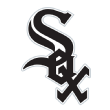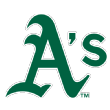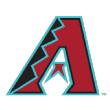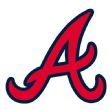After Chicago White Sox general manager Rick Hahn scored a big prospect return for Chris Sale last December, snagging some of Boston’s best young players, the industry perception was that the White Sox got even more aggressive in what they wanted for left-hander Jose Quintana. In the midst of a terrible free-agent market for starting pitchers, Hahn dangled the only real impact rotation piece available to teams like the Houston Astros, Pittsburgh Pirates and New York Yankees. With Quintana’s value heightened by his team-friendly contract, he was far and away the best available option through December, through January, through February.
But the White Sox window of exclusivity with Quintana will probably end this summer because of gathering market forces. With the Toronto Blue Jays and Kansas City Royals floundering early, the New York Mets losing their best player to injury and Pittsburgh losing its best player to a performance-enhancing drug suspension, there could be a deluge of starting pitchers who will draw offers.
Quintana is off to a rough start, with a 5.22 ERA and 14 walks in 29 1/3 innings in his first five outings, which follows a poor finish last September, when he had a 5.30 ERA in six starts. If he rebounds, Quintana may still have more value than any available pitcher in the market because of his contract -- he’s making $7 million this year and $8.5 million next year, with team options for 2019 and 2020. Plus he’s left-handed.
But there will be a lot of starting pitcher choices for contenders like the Colorado Rockies, who have started well and could add depth to bolster a 2017 playoff run. Or the surprising Yankees, who could offer outfielder Clint Frazier to add an arm. The Astros' potential weakness is starting pitching. And depending on what happens with Steven Wright and David Price, the Red Sox may need to land another starter.
Some executives point out that there could be motivated sellers, as well, creating a lot of opportunities for buyers. Under the terms of the new collective bargaining agreement, there will be fewer players who will glean draft-pick compensation, so the old strategy of keeping a prospective free agent to extend a qualifying offer won’t be as attractive. Rather, there could be teams that look to move players to dump salaries and save money, and ask for less in prospect value.
It’s too early to know for sure what direction the Blue Jays will turn, but with their loss Friday, they fell to nine games behind the Yankees and Baltimore Orioles in the AL East. The Royals have collapsed in the past two weeks and dropped the first game of what could be an important homestand Friday. The Mets will be without Yoenis Cespedes for awhile. Even after Starling Marte returns from his suspension, the Pirates’ odds are incredibly long, playing in the same division as the Cubs, Cardinals and resurgent Brewers. And if Pittsburgh somehow makes the playoffs, Marte would not be eligible.
With all of those variables in play, there could be a whole lot of starting pitchers available for discussion, evaluators say:
 Matt Harvey, Mets: He will be a free agent in the fall of 2018, and if New York drops far enough out of the race, teams think the Mets will listen to offers for the right-hander.
Matt Harvey, Mets: He will be a free agent in the fall of 2018, and if New York drops far enough out of the race, teams think the Mets will listen to offers for the right-hander.
 Gerrit Cole, Pirates: His overall numbers (3.60 ERA in 30 innings) don’t reflect how dominant his stuff has been this season. He is throwing the ball extremely well, and even if the Pirates are hanging on the edge of the pennant chase, it might behoove them to at least listen to offers to find out what might be possible in a trade this summer. Some teams thought Pittsburgh was prepared to listen last year, given the looming reality with Cole. He will be eligible for free agency in the fall of 2019 and given that he is a client of Scott Boras, who almost always takes his clients into the market, there is a wide expectation that Cole will be with a team other than the Pirates in 2020.
Gerrit Cole, Pirates: His overall numbers (3.60 ERA in 30 innings) don’t reflect how dominant his stuff has been this season. He is throwing the ball extremely well, and even if the Pirates are hanging on the edge of the pennant chase, it might behoove them to at least listen to offers to find out what might be possible in a trade this summer. Some teams thought Pittsburgh was prepared to listen last year, given the looming reality with Cole. He will be eligible for free agency in the fall of 2019 and given that he is a client of Scott Boras, who almost always takes his clients into the market, there is a wide expectation that Cole will be with a team other than the Pirates in 2020.
 Ervin Santana, Twins: At age 34, he is off to a great start, and so long as he continues to throw effectively, his contract won’t seem so onerous -- Santana is making $13.5 million this year, $13.5 million next year, and he’s got a $14 million team option for 2019. Interestingly, Santana passed through waivers last August without being claimed, which maybe is not surprising after his 2015 performance-enhancing drug suspension.
Ervin Santana, Twins: At age 34, he is off to a great start, and so long as he continues to throw effectively, his contract won’t seem so onerous -- Santana is making $13.5 million this year, $13.5 million next year, and he’s got a $14 million team option for 2019. Interestingly, Santana passed through waivers last August without being claimed, which maybe is not surprising after his 2015 performance-enhancing drug suspension.
Hector Santiago, Twins: He’s 29 years old and will be eligible for free agency in the fall. He has a 2.43 ERA so far this season.
Phil Hughes, Twins: He’s making $13.2 million this year and is locked in for salaries of $13.2 million next year and in 2019.
 J.A. Happ, Blue Jays: He’s under contract through 2018, but the interest in the Jays’ lefty will be shaped entirely by how he bounces back from his elbow trouble this spring.
J.A. Happ, Blue Jays: He’s under contract through 2018, but the interest in the Jays’ lefty will be shaped entirely by how he bounces back from his elbow trouble this spring.
Marco Estrada, Blue Jays: A reliable veteran who has continued to pitch well in the midst of Toronto’s struggles, Estrada is making $14.5 million this year and is eligible for free agency in the fall.
Francisco Liriano, Blue Jays: Liriano has had three good outings and one really bad one so far. The lefty is a free agent in the fall.
 Jason Vargas, Royals: In his first full season since his 2015 Tommy John surgery, Vargas is pitching well, with just two walks and 28 strikeouts in his first 25 2/3 innings. He is making $8 million this year and will be a free agent in the fall.
Jason Vargas, Royals: In his first full season since his 2015 Tommy John surgery, Vargas is pitching well, with just two walks and 28 strikeouts in his first 25 2/3 innings. He is making $8 million this year and will be a free agent in the fall.
 Jeremy Hellickson, Phillies: Philadelphia kept him through 2016 and gave him a qualifying offer, and he surprised many in the industry by accepting. It’s possible that the Phillies could look to move him this year, but if the market saturation deflates offers, Philadelphia could also look to invest a multi-year deal in the righthander, who has pitched well for them and could be a foundation piece in their rotation as the Philly rebuild progresses.
Jeremy Hellickson, Phillies: Philadelphia kept him through 2016 and gave him a qualifying offer, and he surprised many in the industry by accepting. It’s possible that the Phillies could look to move him this year, but if the market saturation deflates offers, Philadelphia could also look to invest a multi-year deal in the righthander, who has pitched well for them and could be a foundation piece in their rotation as the Philly rebuild progresses.
 Brandon McCarthy, Dodgers: L.A. worked to dump his salary, along with Scott Kazmir's last winter. And while Kazmir is currently unmovable because of injury, McCarthy has pitched well so far. The Dodgers have enough surplus in their rotation this summer that they could use McCarthy’s early performance as a springboard to a deal: He is owed $11.5 million this year and in 2018.
Brandon McCarthy, Dodgers: L.A. worked to dump his salary, along with Scott Kazmir's last winter. And while Kazmir is currently unmovable because of injury, McCarthy has pitched well so far. The Dodgers have enough surplus in their rotation this summer that they could use McCarthy’s early performance as a springboard to a deal: He is owed $11.5 million this year and in 2018.
 Derek Holland, White Sox: For the rebuilding White Sox, the investment in Holland this season made sense, because if he pitches well, they can flip him in the market for value -- and he’s off to a good start.
Derek Holland, White Sox: For the rebuilding White Sox, the investment in Holland this season made sense, because if he pitches well, they can flip him in the market for value -- and he’s off to a good start.
 Sonny Gray, Athletics: The 27-year-old could make his first start of the season next week, and scouts will be watching him closely. He was dynamic in his first years in the big leagues before really struggling last year, and he won’t be a free agent until after the 2019 season. If he pitches well in May and June, it might make sense for Oakland to move him in July, like a resurgent stock.
Sonny Gray, Athletics: The 27-year-old could make his first start of the season next week, and scouts will be watching him closely. He was dynamic in his first years in the big leagues before really struggling last year, and he won’t be a free agent until after the 2019 season. If he pitches well in May and June, it might make sense for Oakland to move him in July, like a resurgent stock.
Jesse Hahn, Athletics: The sinkerballer is off to a strong start.
 Zack Greinke, Diamondbacks: Even if Arizona continues to play well, rival evaluators believe that the D-backs will be open to conversations about the right-hander because his salary takes up so much of the team’s budget space. Greinke has a 2.93 ERA in his first five starts this year, and is owed $182 million for the 2017-21 seasons.
Zack Greinke, Diamondbacks: Even if Arizona continues to play well, rival evaluators believe that the D-backs will be open to conversations about the right-hander because his salary takes up so much of the team’s budget space. Greinke has a 2.93 ERA in his first five starts this year, and is owed $182 million for the 2017-21 seasons.
Patrick Corbin, Diamondbacks: He is re-establishing himself with a good start this season, and given his salary -- just $3.95 million for 2017 -- and how competitive the Diamondbacks are, it seems very unlikely he’d be moved this season. But he’s a free agent in the fall of 2019.
 Scott Feldman, Reds: He is pitching on a one-year deal.
Scott Feldman, Reds: He is pitching on a one-year deal.
 R.A. Dickey, Braves: Pitching on a one-year deal.
R.A. Dickey, Braves: Pitching on a one-year deal.
Bartolo Colon, Braves: Pitching on a one-year deal.
Jaime Garcia, Braves: Pitching in the last year of his contract.
 Alex Cobb, Rays: He’s a free agent this fall.
Alex Cobb, Rays: He’s a free agent this fall.
This list could shrink during the summer -- the Pirates won’t trade Cole if they are leading the NL Central, and the Mets won’t deal Harvey if they are in a playoff chase -- or it could grow. But one way or another, it appears the starting pitching options will be plentiful for teams in need of rotation help.
Sunday Night Baseball
The Cubs’ Kyle Hendricks will start against the Red Sox on Sunday Night Baseball, with the hope that the velocity of his fastball will be restored. Through spring training, Hendricks felt fine, but toward the end of spring training, his mechanics got out of whack and he started to lose velocity. Before his last start against the Reds, Hendricks went through a couple of workouts with bungee cords attached to his midsection, with pitching coach Chris Bosio encouraging him to get back to driving through his delivery. With that muscle memory for Hendricks’s delivery kicking in and his mechanics realigned, Cubs bullpen catcher Chad Noble, who catches Hendricks in all of his side work, told Hendricks he could tell a difference right away in how the ball was finishing. Hendricks’s fastball velocity climbed a tick against the Reds, and he’s hoping to see that trend continue tonight.
The sort of modern metrics that weren’t available to previous generations: Boston knuckleballer Steven Wright learned that his arm angle dropped two degrees since last year, and so he worked on that in the days leading up to his start on Saturday.
Andrew Benintendi has a history as a center fielder, but in Fenway Park, he is learning to play the much smaller left field that is backed by the Green Monster. One of the biggest challenges has been learning how the shorter distance affects choices on where to throw the ball.
Around the league
Chicago Cubs officials were infuriated when Bosio seemed to imply that the Brewers' Eric Thames is using performance-enhancing drugs. Thames is off to a tremendous start, hitting 11 home runs through 22 games. The Cubs know first-hand all about this sort of thing; last year, it was Jake Arrieta, after his Cy Young season of 2015, who had to deal with suggestions that he was using PEDs, despite the fact that Arrieta has never tested positive nor been suspended. This is part of the reason why Cubs officials were so angered by Bosio's comments. "It’s just the wrong thing to do," said one staffer.
Rival executive on the Orioles: "I don’t think they’ve gotten enough credit for how they’ve remained competitive year after year in the toughest division in baseball."
The Blue Jays’ offer to Dexter Fowler last winter, to plug one of the holes in their outfield: $64 million over four years. The Cardinals won the bidding with a five-year, $82.5 million deal.
Baseball Tonight podcast
Friday: Stephania Bell digs into the injuries of Yoenis Cespedes, Noah Syndergaard and Madison Bumgarner and gets a victory lap courtesy of Masahiro Tanaka; Justin Havens plays Dead or Alive about the Royals, Giants, Blue Jays, Mets and other teams.
Thursday: David Kaplan of ESPN 1000 on his new book about the Cubs, "The Plan." Keith Law goes buy or sell on some hot and cold starts; Ryan Divish of the Seattle Times with the latest on Felix Hernandez and James Paxton; Matt Davidson of the Chicago White Sox on his hot start.
Wednesday: Brewers GM David Stearns on how the team landed Eric Thames; Clark Spencer of the Miami Herald on the bid of Derek Jeter and Jeb Bush; Tim Kurkjian about some developments around baseball.
Tuesday: Jayson Stark and Alex Speier of the Boston Globe weigh in on the discipline; former pitcher and outfielder Rick Ankiel on the twists and turns of his career, documented in his book; Sarah Langs plays The Numbers Game.
Monday: A conversation with the Nationals’ Adam Eaton about his new teammates Bryce Harper, Max Scherzer, Daniel Murphy and others; Jerry Crasnick on the Orioles/Red Sox incident and how Dustin Pedroia handled it; Todd Radom’s uni and logo quiz, and the No. 23 logo of all-time.
And today will be better than yesterday.
